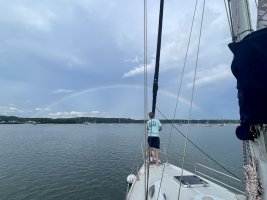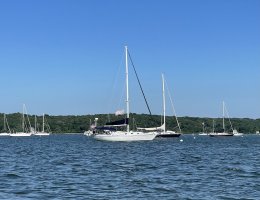bsangs
E35-3 - New Jersey
Have been fortunate so far to not hit any heavy weather while cruising, but that could change this week as I host some friends for five days cruising the Long Island Sound. As if often the case during summer around here, forecasts call for afternoon thunderstorms each day. Fortunately, there is no shortage of bail out marinas and anchorages in the area we’ll be traversing. Still, the possibility exists we’ll be caught in one or two.
So wondering what people’s preferred method of handling a thunderstorm is? Not talking basics like don’t touch metal, don’t use the VHF, put electronics in the oven, etc, more interested in sail tactics. I’m thinking best method is just dropping sails and motoring through, or away from it, if it’s isolated. Those t-storm winds can be strong and unpredictable, so figuring safer with no sail up. That how the Ericson crowd would handle it too?
So wondering what people’s preferred method of handling a thunderstorm is? Not talking basics like don’t touch metal, don’t use the VHF, put electronics in the oven, etc, more interested in sail tactics. I’m thinking best method is just dropping sails and motoring through, or away from it, if it’s isolated. Those t-storm winds can be strong and unpredictable, so figuring safer with no sail up. That how the Ericson crowd would handle it too?





